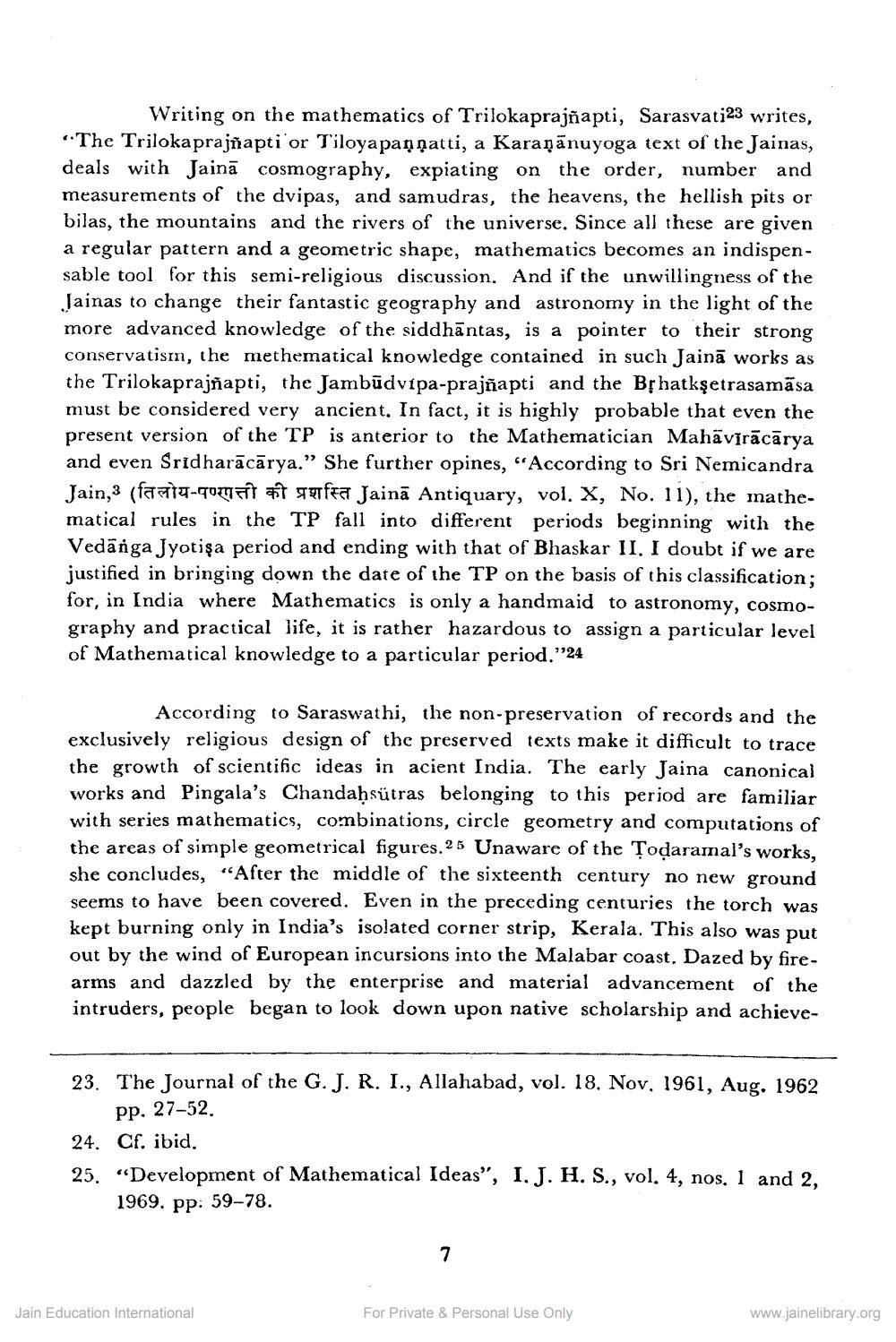________________
Writing on the mathematics of Trilokaprajñapti, Sarasvati23 writes, "The Trilokaprajñapti or Tiloyapaņņatti, a Karaņānuyoga text of the Jainas, deals with Jainā cosmography, expiating on the order, number and measurements of the dvipas, and samudras, the heavens, the hellish pits or bilas, the mountains and the rivers of the universe. Since all these are given a regular pattern and a geometric shape, mathematics becomes an indispensable tool for this semi-religious discussion. And if the unwillingness of the Jainas to change their fantastic geography and astronomy in the light of the more advanced knowledge of the siddhāntas, is a pointer to their strong conservatism, the methematical knowledge contained in such Jainā works as the Trilokaprajñapti, the Jambūdvipa-prajñapti and the Bșhatkşetrasamāsa must be considered very ancient. In fact, it is highly probable that even the present version of the TP is anterior to the Mathematician Mahāvīrācārya and even Sridharācārya.” She further opines, "According to Sri Nemicandra Jain, 3 (T-mattefra Jainā Antiquary, vol. X, No. 11), the mathematical rules in the TP fall into different periods beginning with the Vedänga Jyotişa period and ending with that of Bhaskar II. I doubt if we are justified in bringing down the date of the TP on the basis of this classification: for, in India where Mathematics is only a handmaid to astronomy, cosmography and practical life, it is rather hazardous to assign a particular level of Mathematical knowledge to a particular period."'24
According to Saraswathi, the non-preservation of records and the exclusively religious design of the preserved texts make it difficult to trace the growth of scientific ideas in acient India. The early Jaina canonical works and Pingala's Chandahsütras belonging to this period are familiar with series mathematics, combinations, circle geometry and computations of the areas of simple geometrical figures.25 Unaware of the Todaramal's works, she concludes, “After the middle of the sixteenth century no new ground seems to have been covered. Even in the preceding centuries the torch was kept burning only in India's isolated corner strip, Kerala. This also was put out by the wind of European incursions into the Malabar coast. Dazed by firearms and dazzled by the enterprise and material advancement of the intruders, people began to look down upon native scholarship and achieve
23. The Journal of the G. J. R. I., Allahabad, vol. 18. Nov, 1961, Aug. 1962
pp. 27–52. 24. Cf. ibid. 25. "Development of Mathematical Ideas”, I. J. H. S., vol. 4, nos. 1 and 2,
1969. pp. 59-78.
Jain Education International
For Private & Personal Use Only
www.jainelibrary.org




